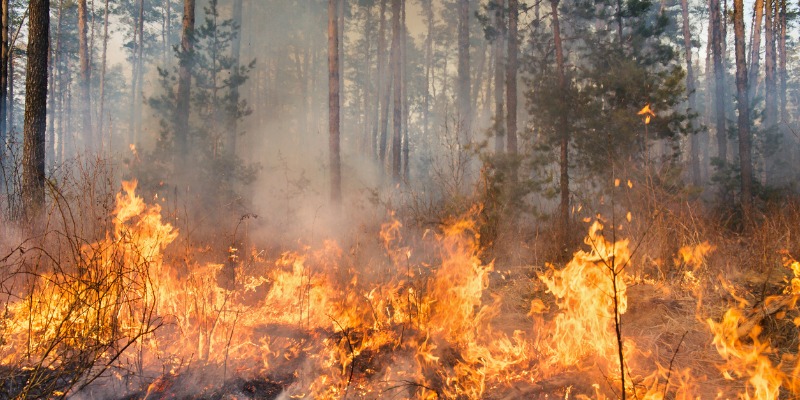Pollinator Health
Learn about the importance of protecting bees and other pollinators, and the actions you can take to help.
Pollinator Health Action Plan survey
Share your thoughts and recommendations on our Pollinator Health Action Plan and help us improve pollinator health in the province.
Your feedback will be considered by the Ministry of Agriculture, Food and Rural Affairs when we report back to the public with a final Action Plan in spring/summer 2016.
Approximate completion time: 15 minutes
Close date: March 7, 2016
Changes to Ontario’s pesticide regulation to protect pollinators
As part of the broader strategy to protect pollinators, changes have been made to regulations under the Ontario Pesticides Act to meet its aim to reach an 80 per cent reduction in the number of hectares planted with neonicotinoid-treated corn and soybean seed by 2017.
Pollinator protection
Improving the health of bees and other pollinators is a necessity. Without pollinators, much of the food we eat and the natural habitats we enjoy would not exist. Taking action now to protect pollinators and reduce toxic pesticide use is a positive step for our environment and economy.
About pollinators
With more than 700 native species in Canada, bees are the most common pollinator. Other pollinators include butterflies, moths, wasps, flies, some beetles, hummingbirds.
Pollinators transfer pollen in and between flowers while visiting a plant for food, mates, shelter and nest-building materials. This process is known as pollination.
Environmental importance
Pollination is important because it helps create a diverse plant population.
Many crops rely on pollinators. These include:
- apples
- cherries
- peaches
- plums
- cucumbers
- asparagus
- squash
- pumpkins
- melons
- blueberries
- cranberries
- certain field crops
- and many other crops
Pollination makes plants which:
- create food and shelter for wildlife and people
- produce fuel and biomass
- moderate temperature and produce oxygen.
Economic importance
Beekeepers produce honey, beeswax and other retail items. They also provide a service to farmers by providing honey bees to ensure there are enough bees to pollinate their crops.
In Ontario 3,000 registered beekeepers operate 100,000 honey bee colonies. Ontario’s managed honey bees and bumble bees generate about $897 million of the roughly $6.7 billion in sales for agricultural crops grown in the province each year. This is equivalent to about 13 % of the province’s total annual crop value.
Commercially raised bumble bees are the primary pollinator in greenhouses. The crops they help pollinate contribute approximately $502 million to Ontario’s economy each year.
In addition to managed bees, wild pollinators also make a significant contribution to Ontario’s agriculture and the environment.
Pollinator health
The declining health and population of bees and wild pollinators is cause for global concern.
This decline in bees and overall pollinator health is likely due to a number of complex factors that fall under four areas:

The decline of these pollinators is a serious problem that requires immediate action to ensure that Ontario’s food system and natural environment are protected.
Ontario’s pollinators
Ontario beekeepers have experienced unusually high honey bee hive losses over the winter.
In 2010-2011, winter mortality rate for honey bees was 43%. In 2012-2013 the rate was 38%. Last winter the mortality rate reached its highest level at 58%. Overwinter dies offs have been an average of 34% over the past 12 years. The level generally considered to be acceptable and sustainable by beekeepers is 15 %.
A large number of bees are also dying during the summer and fall months. In 2012, approximately 240 bee yards reported bee deaths. This rose to 340 yards in 2013. The federal Pest Management Regulatory Agency reported that approximately 70% of the dead bees found in 2012 and 2013 tested positive for neonicotinoid insecticides residues.
The federal Pest Management Regulatory Agency stated that current agricultural practises related to neonicotinoid-treated seed are not sustainable.
Neonicotinoids
Neonicotinoids are a class of synthetic pesticides that are chemically similar to nicotine. They are neurotoxins that kill insects through attacking receptors in nerve synapses. Neonicotinoids are used for field crops, horticulture, nurseries, and urban forestry. While they are targeted at insect pests, they also harm beneficial insects like bees.
Bees and other pollinators may be exposed to these pesticides through spray, dust from treated seeds, residue and contaminated pollen, nectar and water.
3 types of neonicotinoids are considered to be highly toxic to bees and have effects at very low levels:
- Imidacloprid
- Thiamethoxam
- Clothianidin
Neonicotinoid insecticides are systemic and persistent. They spread through plants, making all parts of them harmful to the insects feeding on them. These insecticides also take a long time to break down in soil.
The potential for carry-over of residues may be of concern since these may be transported through run-off from fields to nearby water bodies.
A recent review of 800 peer-reviewed scientific papers by the International Union for Conservation of Nature (IUCN) Task Force on Systemic Pesticides indicated that neonicotinoid insecticides are having impacts on pollinators and other organisms such as birds, earthworms, and aquatic invertebrates.
How neonicotinoids affect pollinators
Neonicotinoids are directly toxic to beneficial insects, like bees (known as acute exposure). Neonicotinoid exposure at prolonged low levels (known as chronic exposure) has been shown to:
- affect the ability of bees to gather pollen, navigate (return to their hives), and reproduce
- make bees more susceptible to diseases.
Research shows that neonicotinoids may impact colonies when residues are brought into the hive by bees after they return from collecting food.
Neonicotinoids background
Neonicotinoids have been used in Ontario since the mid-1990s. At the time, little was known about their potential negative side effects on bees and the ecosystem. Over time, their increased use impacted the health of bees and the ecosystem they support.
Ontario grows a significant amount of corn and soybean (approximately 2.5 million acres of each crop). We also produce 70% of all Canadian soybean and 68% of corn.
In Ontario, neonicotinoid-treated seeds are often used preventatively, even if there is no evidence of a pest problem. Today, nearly 100% of corn seed and roughly 60% of soybean seed are treated with neonicotinoids. Of these crops, there is widespread over use of treated seeds.
The federal Pest Management Regulatory Agency evaluates and registers pesticides in Canada. The agency concluded that the majority of honey bee mortalities in Ontario in 2012 and 2013 were a result of exposure to neonicotinoid insecticides. This is likely from exposure to contaminated dust generated during the planting of neonicotinoid-treated corn and soybean seed.
Some neonicotinoids products have only been federally registered on a conditional basis. These conditional registrations have been renewed multiple times by the federal Pest Management Regulatory Agency even though conditions of registration have not been met. The agency is now reviewing the registration of neonicotinoid insecticides.
What the scientific community says
Based on scientific findings, a precautionary approach by reducing the use of neonicotinoids is reasonable.
This is supported by:
- a recent review of 800 peer-reviewed scientific papers by the International Union for Conservation of Nature (IUCN) Task Force on Systemic Pesticidesindicated that neonicotinoid insecticides impact pollinators and other beneficial organisms
- the Proceedings of the Royal Society of Biological Sciences published a review of the scientific literature concerning neonicotinoid insecticides and pollinators
- the United States Environmental Protection Agency concluded that seed treatments provide negligible overall benefits to soybean production in most situations
- the Pest Management Regulatory Agency evaluated reports of bee deaths and determined that two types of neonicotinoids contributed to the majority of the bee deaths that occurred in corn growing regions of Ontario and Quebec in Spring 2012
Action in other jurisdictions
Global concerns over the decreasing health and population of bees and wild pollinators have resulted in other jurisdictions taking action to protect pollinators.
The United States
In the United States:
- In June 2014 a presidential memo directed agencies to take additional steps to protect and restore pollinator populations.
- The Federal Strategy to Promote the Health of Honey Bees and Other Pollinators was released.
- The Fish and Wildlife service banned neonicotinoid insecticides on farmed areas of national wildlife refuges.
- The Environmental Protection Agency is reviewing neonicotinoid insecticide registrations, which is expected to conclude in 2018. A recent scientific report from the agency concludes that, “these seed treatments provide little or no overall benefits to soybean production in most situations. Published data indicate that in most cases there is no difference in soybean yield when soybean seed was treated with neonicotinoids versus not receiving any insect control treatment.”
- Minnesota is reviewing neonicotinoid insecticide use, registration and pollinator impacts, which could lead to tighter regulations.
European Union
The European Union placed a 2-year ban on neonicotinoid insecticide use, with some exemptions. This ban was put in place after a report by the European Food Safety Authority indicated “high acute risks” of 3 neonicotinoid insecticides to bee health. The ban will be reviewed in 2015. Additional bans on the use of some neonicotinoids for specific crops in France, Germany, Italy and Slovenia existed prior to the 2013 ban.
The United Kingdom is currently covered under the European Union’s 2-year ban. A 10-year Healthy Bees Plan was launched in 2009 and in November 2014, the federal government released a National Pollinator Strategy that sets out a 10-year plan to help pollinating insects survive and thrive.
Australia
In Australia, the government provides information, warnings and use instructions on labels (with a focus on neonicotinoids). They are also reconsidering current testing methods.
Neonicotinoids and human health
In general, neonicotinoids kill insects through attacking receptors in nerve synapses. Neonicotinoids bind more effectively to a specific nerve receptor in insects than they do in mammals.
Recently, the European Food Safety Authority’s Panel on Plant Protection Products reviewed existing data on the potential damage to humans of commonly used neonicotinoids. These include imidacloprid and acetamiprid. The review focused on the potential damage they can do to the developing human nervous system, particularly the brain. The panel is advising that all neonicotinoids be evaluated for developmental neurotoxicity.
Provincial monitoring
The Ontario government and the federal Pest Management Regulatory Agency are monitoring the local environment to better understand the factors affecting honey bee deaths and broader environmental impacts.
The Ministry of the Environment and Climate Change is planning a multi-media monitoring study to measure changes in neonicotinoid concentrations in the environment following regulations limiting the use of neonicotinoid treated seeds.
The study (in 2015) will be used to benchmark neonicotinoid concentrations in the environment prior to the regulations taking effect. Subsequent years of study (tentatively 2016-2020) will be used to track future changes in neonicotinoid concentrations.
Intensive stream water quality sampling is planned in selected watersheds with a high proportion of corn and soybean crops, representing a range of soil types.
Focused, complementary sampling of benthic macroinvertebrates (stream insects), stream sediments, and soils is planned to provide a more complete understanding in the study watersheds.
Scientific papers on neonicotinoids and pollinators
- Seeds Indirectly Affect Honeybee Performance and Pathogen Susceptibility in Field Trials
- Seed coating with a neonicotinoid insecticide negatively affects wild bees
- Soil-Applied Imidacloprid Translocates to Ornamental Flowers and Reduces Survival of Adult Coleomegilla maculata, Harmonia axyridis, and Hippodamia convergens Lady Beetles, and Larval Danaus plexippus and Vanessa cardui Butterflies
- Large-Scale Deployment of Seed Treatments Has Driven Rapid Increase in Use of Neonicotinoid Insecticides and Preemptive Pest Management in U.S. Field Crops
- Assessment of Chronic Sublethal Effects of Imidacloprid on Honey Bee Colony Health
- Neonicotinoid-Contaminated Puddles of Water Represent a Risk of Intoxication for Honey Bees
- Neonicotinoid Insecticide Residues in Surface Water and Soil Associated with Commercial Maize (Corn) Fields in Southwestern Ontario
- An overview of the environmental risks posed by neonicotinoid insecticides
- Neonicotinoids impact bumblebee colony fitness in the field
- Soil-Applied Imidacloprid Translocates to Ornamental Flowers and Reduces Survival of Adult Coleomegilla maculata, Harmonia axyridis, and Hippodamia convergens Lady Beetles, and Larval Danaus plexippus and Vanessa cardui Butterflies
- Non-target effects of clothianidin on monarch butterflies
- Neonicotinoid insecticide travels through a soil food chain, disrupting biological control of non-target pests and decreasing soya bean yield
- Declines in insectivorous birds are associated with high neonicotinoid concentrations
- Effects of Imidacloprid, After Chronic Exposure, On the Insect Model Drosophila melanogaster
- Neonicoti clothianidin adversely affects insect immunity and promotes replication of a viral pathogen in honey bees
- Bees prefer foods containing neonicotinoid pesticides
- Seed coating with a neonicotinoid insecticide negatively affects wild bees
- Widespread occurrence of neonicotinoid insecticides in streams in a high corn and soybean producing region
- Crop Pollination Exposes Honey Bees to Pesticides Which Alters Their Susceptibility to the Gut Pathogen
- A restatement of the natural science evidence base concerning neonicotinoid insecticides and insect pollinators
Government Reports
Source: Pollinator Health | Ontario.ca
![]()




